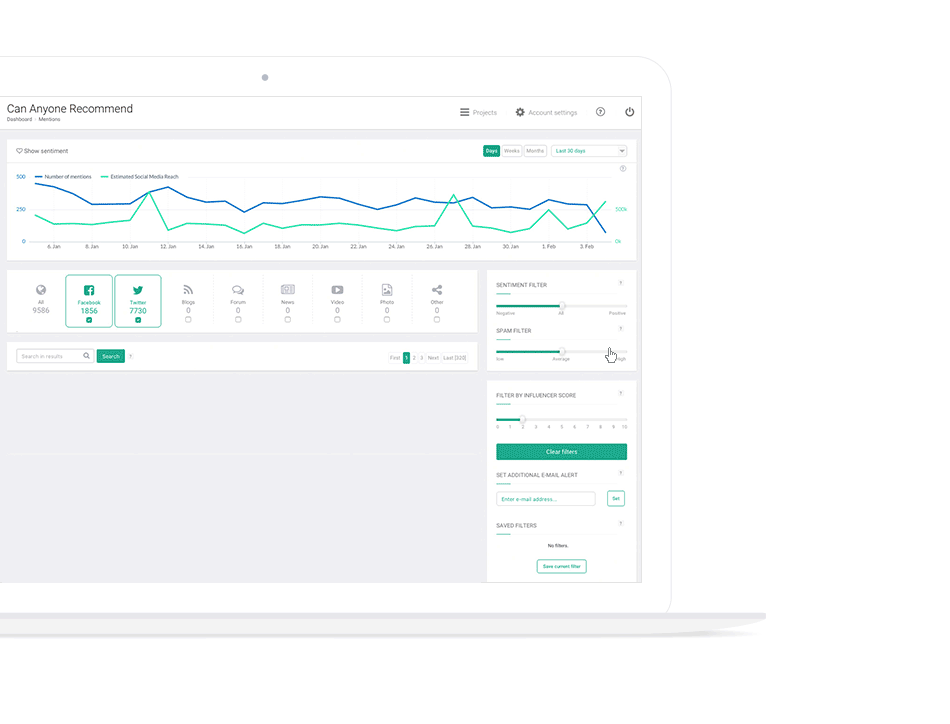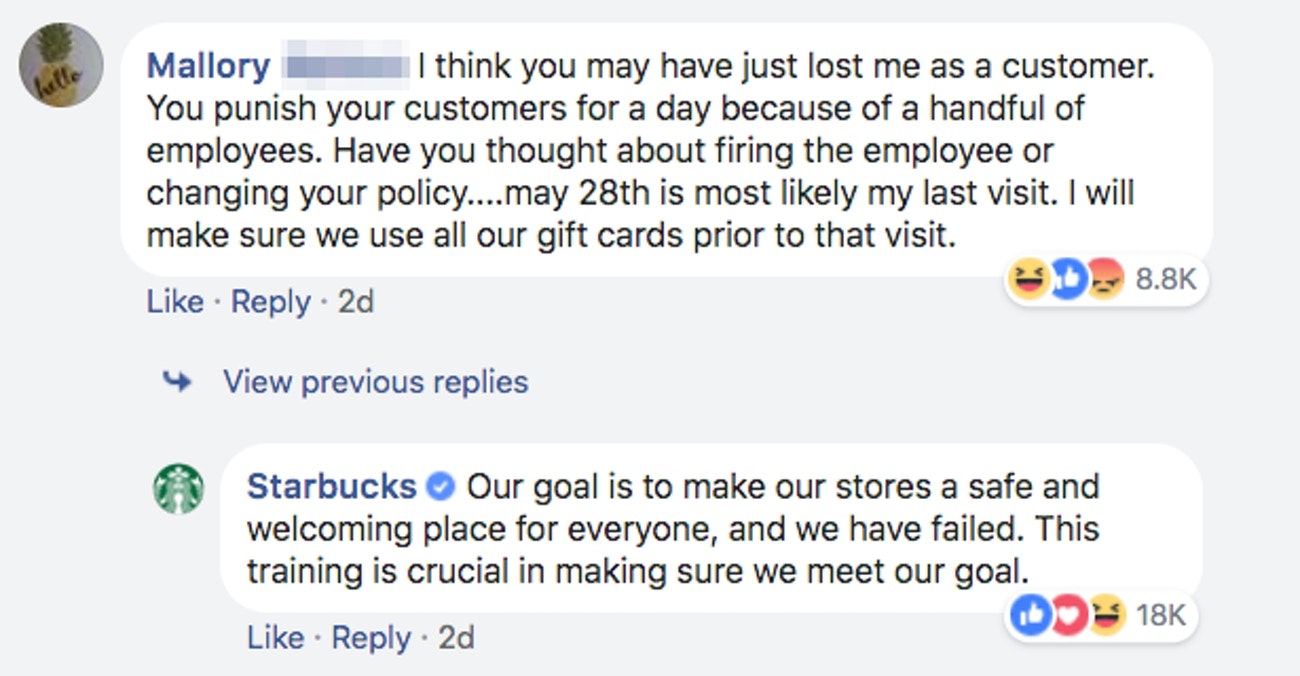What’s Your Nonprofit Social Media Crisis Response Plan?
In 2012, the Susan G. Komen Breast Cancer Foundation chose to cut off funding to Planned Parenthood because of political pressure. It faced a social media uproar in response, and though it reversed its decision after only three days, the damage to its image, its organization and its bottom line was permanent.
Because it was unable to readily respond to such a social media backlash, the following fiscal year it lost, according to a , “$77 million, or fully 22 percent of the foundation’s income.”
Though giant nonprofits such as the Susan G. Komen foundation may be able to weather these storms and losses, a similar type of backlash could spell the end of your own, smaller nonprofit.
In light of the strong “callout culture” on social media these days, smaller nonprofits must have a solid social media plan—despite their limited resources—so they are prepared to immediately respond to crises on social networks if and when they arise and avoid losing valuable donations.
What does such a plan look like? We’ve outlined the steps required to respond to a nonprofit social media crisis below.
Here’s what we’ll cover:
Find Out About Problems Immediately With Social Media Monitoring Tools
Practice Radical Honesty—Even With Yourself
Respond Directly to Individual Social Media Posts
Recognize the Limits of Technology
Find Out About Problems Immediately With Social Media Monitoring Tools
In today’s world, there’re a number of ways a well-meaning nonprofit can become the victim of a social media backlash, including:
Misinformation: Factually incorrect information about your organization is spread over social media.
Misinterpretation: Something your organization has done is being interpreted in a different light than you intended.
Mistake: Some member of your organization has done something wrong, and that mistake has been noticed by a large number of people.
For a small nonprofit like yours, which likely has a local focus, gossip can spread particularly fast, making misinformation and misinterpretation key problems at times.
Though it’s important to avoid these scenarios to begin with, once an issue comes up you need to be ready to respond.
However, you can’t respond effectively unless you’re aware of a problem the instant it arises. That is why you need to be using social media management and monitoring tools as a part of your regular social media plan.
Social media management tools will make your social media marketing campaigns easier by automating when posts go live and providing you with analytics on the success of individual posts.
Social media monitoring tools enable you to search various social media sites (Facebook, Twitter, Tumblr etc.) for mentions of your organization’s name and alert you if certain negative keywords pop up in your mentions or in responses to your posts.

The “mentions” function in Brand24
This means that you can have an alert emailed to you immediately after a post goes up that is critical of your organization. Such alerts prevent a wave of backlash from building up before you have a chance to respond.
It is especially important that you are constantly vigilant about your own social media, because, as Bill McCue, founder and president of McCuenications, points out, “the media also monitors social media channels for news updates from the industries they’re reporting on.”
The single best way to respond to a crisis is to prevent a situation from reaching crisis levels in the first place.
Choose a Single Public Face
One of the quickest ways for a small, manageable situation to spiral out of control into a full-fledged crisis is for your organization to fail at presenting a unified front.
If one person is responding defensively while another is responding proactively, the two different responses run the risk of cancelling each other out and further eroding your credibility with the public.
That’s why Christina Disbrow, a small nonprofit development expert at All Write, All Write, All Write, recommends, “One person needs to be the media contact, and any public statements are to be relayed by that person.”
Fortunately, this is where you’ll have an advantage as a smaller nonprofit—with fewer people on your team, there will be less chance of conflicting responses getting out.
The person chosen to speak for you then needs to accurately represent what your organization’s leadership has decided as a group.
Imagine, for example, that a small nonprofit animal shelter is facing a social media uproar over a video that shows an employee abusing an animal. What would it look like if the following two responses were issued on the same day?
The executive director responds defensively, and claims that the video is misleading and the employee did nothing wrong.
The board chair responds proactively, and announced that the employee in question will be fired and all other employees will undergo animal welfare training.
These different responses run the risk of cancelling each other out and further eroding that shelter’s credibility with the public. Your nonprofit could face a similar problem if it issues multiple responses from multiple people.
The main stakeholders of the organization need to come together to develop a singular plan, and they should inform the rest of the organization about that plan before anybody publicly responds to the issue.
Inform your employees that any requests for information should be relayed to this one point person and that no other public response to the situation should be given. All public-facing information needs to come either from that specific spokesperson or through official social media feeds.
What’s more, you need to make sure this public spokesperson is responding in the right way, with the right tone. That’s where you need to make sure that, as an organization, you’re being radically honest with both the public and yourselves.
Practice Radical Honesty—Even With Yourself
The more honest you are about a crisis with yourself, your employees and your constituents, the better positioned you’ll be to get a handle on the situation.
The first thing you need to be honest about is whether or not you’ve actually done whatever it is people are accusing you of doing. And in either case, you must respond publicly and vocally.
What to Do When You’re Not at Fault
According to Kristen R. Noffsinger, president of Kristen Rose Imagine Consulting, if you are being accused of something you haven’t done, then in the name of transparency you should still address the matter:
“[List] honest situations that might correlate to the issue and state the facts of their actual circumstance—always being uplifting and positive, never engaging in negative debate or struggle through virtual channels.”
In this circumstance, it is still crucial to follow all the other steps of this response plan to limit any damage to your brand. However, have faith that the facts will come out, and don’t feel the need to apologize for something you have not actually done.
What to Do When You Are at Fault
In the case where the social media backlash against you is stemming from something that you’ve done, Noffsinger suggests that you publicly “accept the blame” while staying positive.
“Never discredit your organization, but politely accept the blame while stating the positive efforts being made to address it and listing real action items the public can expect to see.”
You must be as honest with the public as you are with yourself, clearly admitting to what you’ve done wrong and what you intend to do in the immediate future to fix it.
Of course, this requires sitting down as an organization and creating a solid list of actions you can take to improve the situation. This is another area where you need to be radically honest—only by admitting to what caused the problem can you take steps to improve it.
Case Story: Starbucks
After an incident in which Starbucks was accused of racial bias, the company shut down 8,000 of its stores for racial bias training. This was a clear step that the company took in response to their problem, and one that showed the public that they were taking the issue seriously and had a plan in place to address it.

A Starbucks closed for training (Source)
The need to present the public with a clear plan of action once again underscores the requirement that you constantly monitor social media for a problem as it arises, giving you enough time to gather your leadership team together and decide on that course of action before you provide a public response.
Note: Starbucks, as a giant international corporation, obviously deals with a different level of social media than a small nonprofit. Realize that your own social media crises will likely be somewhat smaller but will still need to be resolved using the same level of thought, care and tact.
Respond Directly to Individual Social Media Posts
In the midst of a backlash on social media, you can be overwhelmed with hundreds, or even thousands, of postings and direct messages to your organization’s official accounts, many more than your relatively small nonprofit is used to dealing with.
Though this can be overwhelming, you should think of it as providing you with many opportunities to directly provide a bit of customer service.
As tempting as it may be to let a public statement or press conference stand as your only official response, it is to your benefit to respond directly to as many social media posts as possible. This will allow you to address the specifics of people’s complaints and show them that their individual concern matters to you.
As Susan Young, CEO of Get in Front Communications, Inc., explains, “No one likes to be ignored, so I’m a firm believer that individual responses are best when possible.”
This not only gives you a chance to connect with people who are dissatisfied with your organization, but “[y]ou can communicate with a person who is upset through a direct message, private message on Facebook or a phone call.”
Direct contact allows you to move the conversation outside of a public debate that might just exacerbate the situation.
Another positive benefit of responding to individual posts and mentions is that it provides a release valve on the pressure that is building against you. Abigail Salisbury, nonprofit legal expert at Salisbury Legal, LLC, recommends, “It is often best to address things in the moment instead of letting resentment build.”
When it comes to the actual content of these responses, you need to be careful and considerate in the tone that you take. You need to remember to be humble and honest, but also, according to Salisbury, “avoid taking comments personally, actively listen and try to learn from the situation.”
Kristen Noffsinger adds, “The best rule of thumb here is to be kind and positive, always. Never answer anger with anger or with anything that could dig your hole deeper if it was brought against you at another time.”
The exception to the rule of always responding is when “a comment is clearly abusive and seems fruitless to engage in. For example, if the comment is malicious and slanderous or uses foul language or abusive threats.”
In that case, you might choose to spend your time responding to other posts that express concern without hurling abuse your way.
Case Story, Continued: Starbucks
When the company faced a secondary backlash over closing their stores for a day to train employees about racial bias, their social media team took the time to directly respond to dozens of complaints.
They did so with thoughtful, positive, inclusive posts that reiterated the company’s position while gently affirming the larger goal of making their stores more welcoming to all customers.

An example of Starbucks’ response to a complaint on social media
This is another situation where social media management tools will help you, by streamlining your mentions and messages and saving you time as you craft responses.
This will be a moment in time when you want to focus on the content of your message, so you will be grateful for software that can handle the actual logistics of gathering mentions and posting responses.
However, you need to remember that this is also a situation in which the human touch is of vital importance and technology can help you only so much.
Recognize the Limits of Technology
As crucial as social media monitoring tools may be to your nonprofit social media strategy, you still have to remember that humans are better suited to responding to the complaints of other humans than even the most sophisticated of software can be.
Use your good judgement in conjunction with social media management and monitoring software to create an unbeatable one-two punch that will help you prevent or properly respond to social media crises and backlash.
In practice, this means that you need to stay on top of your social media and be thoughtfully responsive to posts at all times, not just when a crisis arises.
And as Abigail Salisbury explains, over-relying on social media management tools can inadvertently create the type of problem you’re using the software to prevent, such as inadvertently making an insensitive post amidst a national crisis or tragedy:
“There is no substitute for good judgment, common sense and attentiveness.”
Abigail Salisbury, Salisbury Legal, LLC
This means that your responses to individual posts should be genuine and authentic and not simply a rote reiteration of a press release.
Social media management tools can help guide you through your social media mentions and keep you aware of how your organization is being discussed, but they should not be used to respond to posts.
Blanket responses posted by bots will feel impersonal and uncaring to a constituency that is already angry; your responses need to all be written and posted by an actual person.
By utilizing the best of your human resources and the best of your technological resources, you’ll be better able to nip problems in the bud and ultimately save your organization upwards of millions of dollars in donations.
Next Steps
Now that you have your nonprofit plan in place, and recognize that technology will play a major role in that plan, we recommend that you check out the following guides to different categories of software that small nonprofits like yours have found useful in their own day-to-day work: